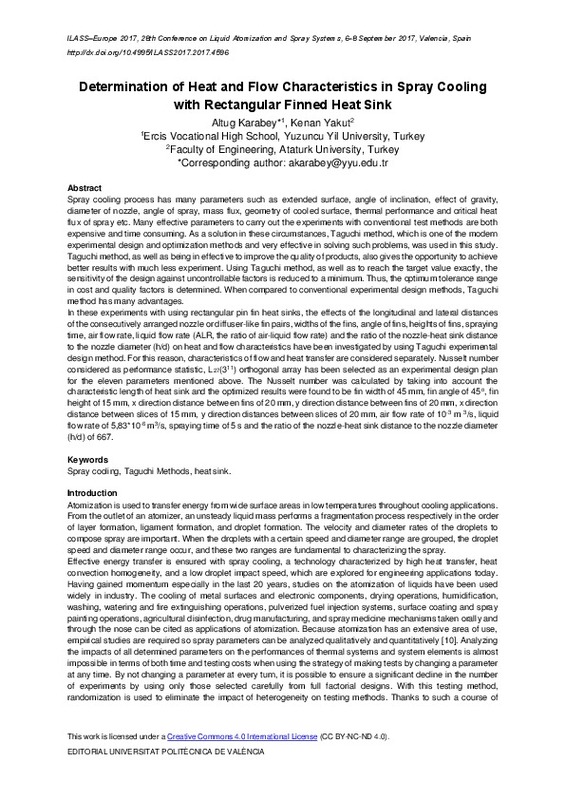JavaScript is disabled for your browser. Some features of this site may not work without it.
Buscar en RiuNet
Listar
Mi cuenta
Estadísticas
Ayuda RiuNet
Admin. UPV
Determination of Heat and Flow Characteristics in Spray Cooling with Rectangular Finned Heat Sink
Mostrar el registro completo del ítem
Karabey, A.; Yakut, K. (2017). Determination of Heat and Flow Characteristics in Spray Cooling with Rectangular Finned Heat Sink. En Ilass Europe. 28th european conference on Liquid Atomization and Spray Systems. Editorial Universitat Politècnica de València. 637-644. https://doi.org/10.4995/ILASS2017.2017.4596
Por favor, use este identificador para citar o enlazar este ítem: http://hdl.handle.net/10251/99834
Ficheros en el ítem
Metadatos del ítem
| Título: | Determination of Heat and Flow Characteristics in Spray Cooling with Rectangular Finned Heat Sink | |
| Autor: | Karabey, Altuğ Yakut, Kenan | |
| Fecha difusión: |
|
|
| Resumen: |
[EN] Spray cooling process has many parameters such as extended surface, angle of inclination, effect of gravity,
diameter of nozzle, angle of spray, mass flux, geometry of cooled surface, thermal performance and critical ...[+]
|
|
| Palabras clave: |
|
|
| Derechos de uso: | Reconocimiento - No comercial - Sin obra derivada (by-nc-nd) | |
| ISBN: |
|
|
| Fuente: |
|
|
| DOI: |
|
|
| Editorial: |
|
|
| Versión del editor: | http://ocs.editorial.upv.es/index.php/ILASS/ILASS2017/paper/view/4596 | |
| Título del congreso: |
|
|
| Lugar del congreso: |
|
|
| Fecha congreso: |
|
|
| Código del Proyecto: |
|
|
| Agradecimientos: |
|
|
| Tipo: |
|








